Salad is known to people since the times of antiquity. Then this culture was grown by the ancient Romans, Greeks and Egyptians. Over time, its popularity has spread to European countries, and later America. In general, there is an opinion that by its name he, under which is known today, is obliged to Italians. According to this version, the word "salad" from Italian means "salty". It is possible that his spicy taste has become the cause of such a name. According to another version, the name of the vegetable gave the Latin phrase of Herba Salata, literally transferred as a "salt grass". In general, in antiquity with Salat, they were not particularly talked, it was simply pumped into large pieces, watered with olive oil, and then shed. In the Middle Ages, he was often served as a garnish to meat and fish dishes.
Content
- Culture characteristics
- Basics of culture culture
- Growing salad in winter in greenhouse
- Methods for growing culture in greenhouse
- Growing salad in greenhouse with other plants
- Soil preparation in greenhouse
- Landing salad in greenhouse
- Plant care
- Fighting pests and diseases
- Why is it worth growing a salad?
Culture characteristics
Salad is an annual plant. Therefore, in one season, it gives leaves for consumption and seeds for planting. As food, this greens uses predominantly fresh together with oil, vinegar and other vegetables. It perfectly adds the taste of various dishes, including fish, potato and meat garnish. This vegetable is also known in its composition of a large number of organic and mineral substances.
Salad refers to early cultures. Therefore, its fresh leaves fall on the table early. Moreover, the spring grade of culture is pretended. Also depending on the periodicity of ripening, there are summer and autumn varieties.
The most popular types of culture:
- It is believed that the greatest value is the coaching salad, which has such advantages, as ancientity and cold resistance. This allows you to assemble the harvest even early in spring. It is during this period that the plant has the greatest concentration of vitamins and minerals in its leaves.
- One of the most popular species of the plant is a leaf salad. It is usually used in food shortly after collecting. The reason for this is bad tolerability by salad transportation and long-term storage. Such a culture, as a rule, is collected early, because after the fifth-seventh sheet, it becomes tough and loses tenderness for which it loves it. It is noteworthy that the sheet view can be soiled both in spring and autumn.
- Another representative of Salads, which was mentioned above, is Roman, which is an oblong loaf of Kochan. The most interesting thing is that the Kochan is not tied by itself, but is formed by an artificial way. For its formation, you need to link the leaves over the middle of the plant. In order to quickly get the harvest of this salad, it is usually planted already in the form of seedlings, and when heat will come, seeds use. If romaine cut, he kept very short time. Therefore, to increase the "shelf life", it is best to dig and store the roots and a small lump of earth, which is directly in front of the intended uses shake off and cut.
- As for sparky salad, it undoubtedly has its advantages and disadvantages. Food is basically leaflets and stalks. By the way, it is due to the taste of thickened stems, which is similar to the taste of asparagus, this salad has such a name. Before using stems, usually, first cleaned from the crust and boil. After that, the salad is a little roasted in oil and in breadcrumbs. Grow the stem of this plant can be up to one meter high. Compared to other varieties of culture, sparky variety has a longer storage period. Just so that it is preserved longer, you need to eat a plant with roots and then put away from light and high temperature.
Basics of culture culture
Plant Salad perfectly tolerate temperature decrease. In this case, it is quite demanding to humidity of the soil in which it grows. It is best grows in the lungs of fertile soils, although it can grow in other types of soil. For the cultivation of this culture, it is preferable to halftime. It grows well in the soils, where potatoes, tomato, cucumber and onions were planted. It is noteworthy that the salad that was grown in room conditions in winter, it contains about two times less ascorbic acid, carotene than a plant that has been grown in an open soil.
Singing this greenery is usually early in spring. The plot on which sowing is carried out should be treated with mineral fertilizers. After about the expiration of 11-16 days after the first sowing, the procedure is repeated. It is important that this was done before the onset of hot and dry weather. Sowing is usually produced at a depth of 0.5-1 cm. The first shoots can be observed on the second day. In order for larger sockets, it is recommended to cut forward a plant in the phase of three real leaves. At the same time, in a row between shooting should be a distance of at least 7-11 centimeters. Thanks to this thinner, the yield of culture and product quality increases.
Plants that were removed from the soil during thinning are used in food. If there is a need, then make a feeder with an ammonium nitrate. As for watering, this is done only in the case of soil drying. In order for the lettuce of lettuce to remain clean, after carrying out a weeding, thinning and soil looser, make mulching with a bulk material, such as peat or sand.
Growing salad in winter in greenhouse
You can grow this culture not only in the spring-summer period, but also year-round. The only condition in order to do this at low temperatures is the presence of a greenhouse.
Landing and growing any greenery, including salad in greenhouse conditions - the case is not quite troublesome and accessible even to the novice gardener. This plant is not too whimpelled to changes around it and grows perfectly even with substantial fluctuations in temperature and humidity. Already in two decades, after landing, the salad forms a low stem, which grows up a socket to 9 powerful wide leaves. If there is a shortage of light in the growing place, the stem of lettuce can stretch into several centimeters. The most optimal intervals for sowing this culture in the greenhouse are two periods: January-April and September-December. Within the rest of the period, it can be easily grown in the open soil.
Given the huge benefit of salad for the human body due to the high content of vitamins and minerals, the demand for it is constantly high, especially in winter. Therefore, the cultivation of this plant can be quite profitable.
Methods for growing culture in greenhouse
Salad in the greenhouse is grown in several ways:
- Landing in open ground. Typically, such greenhouses are arranged in private farms in which greens grow exclusively for their own consumption. The advantage of this method is that the owners of the greenhouses can not be taken care of the construction of special pallets and boxes. However, with severe frosts, such a greenhouse will require more energy for heating.
- Growing salad in vases and boxes. In this case, it is sowing into small pymbols or boxes, which are installed on special pallets or racks. In this case, it is more convenient for them to care, and the soil is not as affected by the change in the ambient temperature changes.
- Method of hydroponics. This is one of the most progressive ways to grow salad. It is that the plant is planted in special cups of 2-3 seeds in one. A specially cooked mixture is poured into the cups for rapid growth of culture. At the bottom of the capacity made special holes for germination of roots. As soon as the roots of the plant germinate, they are inserted into a special chute in one row. He was made in such a way that the inserted glass with a seedling does not fully pass inside, but as it wohes. Next, a special solution is supplied by the groove. This solution is nothing but water enriched with vitamins and nutrients. At the same time, the molecular composition of the solution is controlled by special sensors, and, if necessary, is adjusted by adding the required substance. Due to this method of cultivation, the growth period of salad is significantly reduced, and its bush has a large number of healthy beautiful leaves.
The hydroponics method is used mainly for the industrial production of this greenery, because it requires at the beginning of large capital investments. The main costs fall on automation that should control the level of humidity and illumination, the temperature in the greenhouse, as well as the composition of the solution.
Growing salad in greenhouse with other plants
As an independent culture, this plant is usually grown at the first turn in the greenhouse or a greenhouse. That is, this plant at the annual cycle should go first. It is done because it grows pretty quickly and gives a good harvest. At the same time, the soil field of it becomes more favorable for growing cucumbers or tomatoes.
With them, the salad can grow at the same time. Place it in a bent for a soil seal. In order not to delay the sowing of tomatoes or cucumbers, preferably leaf varieties of plants are sighable. They quickly shoot and give a crop. For more efficient use of seed areas, one can be treated in a bent every 10-20 days. Then, while the seedlings of tomatoes or cucumbers will germinate, you can freely use salad as the main trading culture.
Soil preparation in greenhouse
Consider how the preparation of the soil to the seed of seed is. This culture for full growth requires highly hydrogen soils rich in minerals. Wednesday This plant prefers the weakness or neutral. Ideal for growing salad suits ground after cucumbers or tomatoes. That is why these cultures perfectly alternate and coexist with each other.
If the soil before sowing is considered poor, it feels like potash or phosphate mineral subcortures. Dosage fertilizers for 1 m2 seed area: 40 gr. Superphosphate and 15 gr. Potassium chloride. If there is such a need, compost should be made. With such a fertilizer, you need to be extremely neat, since, making it more of the prescribed norm, you risk "overheet" all crops. Maximum compost dosage - 1.5 buckets per 1 m2.
Landing salad in greenhouse
The landing of this culture is usually carried out with the help of specially trained seeds. It is necessary to more carefully treat the selection of recreation material, since it depends on it by more than 50% success in the cultivation of salad. It is better to take seeds already past processing. They sow them 2-3 pieces in one hole, while the distance between the pits should be at least 30 cm in order for each plant the maximum amount of light falls into each plant. Otherwise, as we said earlier, the stem culture rushes upwards, and the sheets, in turn, will be weak.
Some farms are often practiced by landing salad from seedlings. Such an operation significantly reduces the growth rate of the commodity culture. In the ground greenhouse, the seedlings are located in the order of seven-stricken tape, and in the rack-in-line method. When placing seedlings, it is necessary to ensure that the root neck of the plant is not lower than the soil level, otherwise the plant can be contrary. If the salad seedlings were grown in peat pots either cells, then it is fellow half of their heights.
Plant care
Salad itself does not require careful care. All attention in the cultivation of this plant should be concentrated on maintaining the optimal temperature and humidity, as well as in the fight against pests and diseases:
- So, the optimal temperature regime for normal growth of salad is considered the range from +15 ⁰c to +20 ⁰ with a decrease in this indicator in the range from +8 ⁰c to +10 ⁰c at night. Naturally, the salad can grow at temperatures above +5 ° C, however, the above indicators are most preferred. It is worth noting that plants that are normally formed stems or kochens (depending on the type of salad) are less susceptible to problems due to low temperatures than young seedlings.
- Water salad only in case of soil drying. This should be done so that the moisture does not go to the leaflets of the plant. After all, they can "pick up" phytoofluorosis or other disease, which are subject to plants of this kind.
- It is necessary to water only aisle. At the same time, it is necessary to clearly calculate the amount of moisture transmitted by plants. Its disadvantage can lead to the degradation of the stem and leaves, and the surplus - to rotting the roots.
- In the process of growth of plants, it is necessary to explode the soil of rods. It is done 1-2 times. So, in the ground will be more moist and oxygen, which will ensure normal growth of plants.
- If necessary, mineral fertilizers dissolved in water, namely urea (15-20 Gy), potassium chloride (15 gr) or ammonium salter (10 Gy) at the rate of 1 m2 of sowing, are injected in the vegetation process. Ferrity of plants spend no more than 2 times for the entire vegetation process.
- Clean the salad in the greenhouses, when his sheet reaches a length of 7-9 cm. Cleaning spend pulling the bush with the root and shakes the soil from it. It is not recommended to make such a procedure immediately after watering, although it is much easier. The fact is that the wet leaves are more susceptible to rotten, so the plant will become faster and will lose its freight. Cleaning of coastal varieties of salad is also produced as cauldron - cut off the coach.
Fighting pests and diseases
Although the salad is considered an unpretentious plant, it is subject to influence of diseases and pests, among which fungal diseases are most common in greenhouses and greenhouses. These include gray and white rot. Especially often these diseases affect plants landed in the form of seedlings. From the pests, the TLL comes most of all.
To prevent these problems, it is necessary to make a weeping of riddles in time, to observe the correct watering regime and feeding plants, as well as to carry out plant processing on time.
Why is it worth growing a salad?
On the benefits of culture
Fresh leaflets of lettuce have a somewhat specific taste similar to radish or horseradish. Like the other types of leafy vegetables, it is often used in the preparation of various salads, omelets, soups, sandwiches. In addition, this vegetable culture is well suited for meat dishes, fish products, eggs, cottage cheese, potatoes, as well as to various gravy and sauces. In some countries, Africa is grown by special fatty grades of salad. Oil, which is obtained from them, is actively used in cooking, soap and perfumery.
Salad about 90% consists of water, the remaining mass is fats, proteins, carbohydrates, ash and dietary fiber. As for calorie content, then in 100 grams of the product contains approximately 32 kilocaloria. It contains vitamins A, C, E, K, PP and Group B. It is concentrated in its composition.
Due to the fact that the plant contains a lot of vitamins, it is great for the fight against the short by avitaminosis. In addition, the salad perfectly excites appetite, helps to cope with sleep problems, stimulates digestion, normalizes blood pressure. In addition, it has good anti-inflammatory, antimicrobial, expectorant, wound-healing, choleretic and diuretic actions.
According to scientific research, the regular use of this vegetable leaf culture, reduces the risks of damage to the DNA of blood cells, the occurrence of age maculodystrophy, cataracts, prostatitis and cancer. In addition, the salad shows itself as a therapeutic and prophylactic agent for burns, ulcers, colds, cardiovascular ailments and gastrointestinal diseases. It is also useful for anemia, depressive states, increased nervous excitability, insomnia, is able to reduce pain and swelling at inflammation of the joints.
Salad, like many vegetables, for some categories of people can be harmful. In particular, consumption is contraindicated with colitis, gastritis and duodenites.
Storage secrets
Salad leaves are recommended to be stored in a refrigeration department where vegetables are usually located. At the same time, it is best to wrap them with paper or polyethylene. Otherwise, he can dry. But, before laying a salad in a refrigerator for storage, his leaflets need to be slightly adding so that they are not wet. Otherwise, they can quickly plant. Before serving the leaves of salad to the table, it is recommended not to cut it with a knife, but to break your hands. Also, you should not prepare it in advance. Fill and salt leaves are necessary immediately before use.

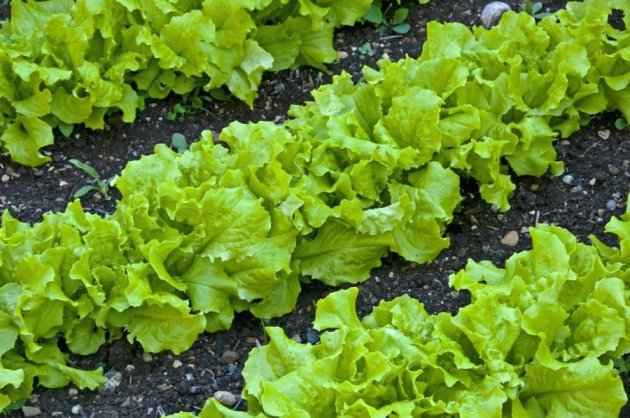
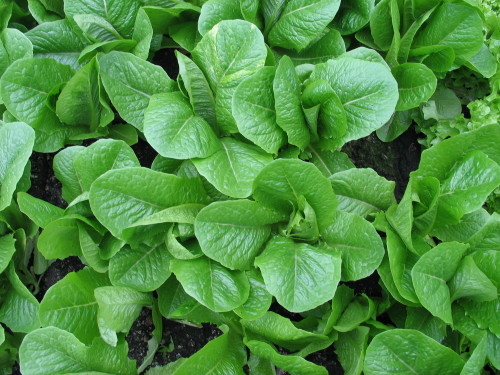
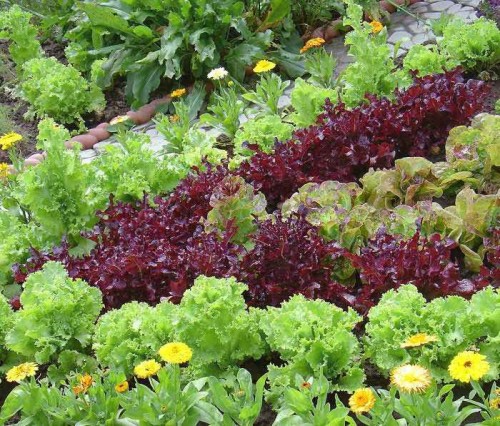
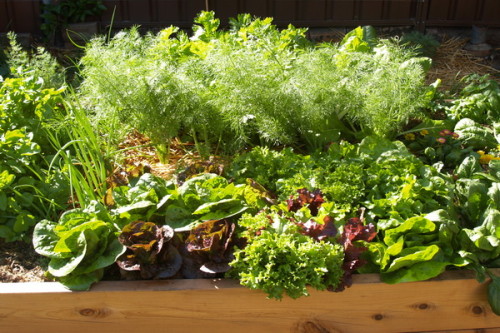
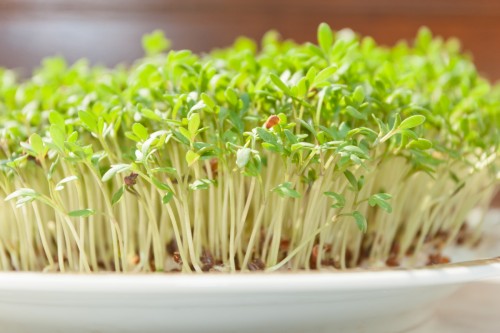
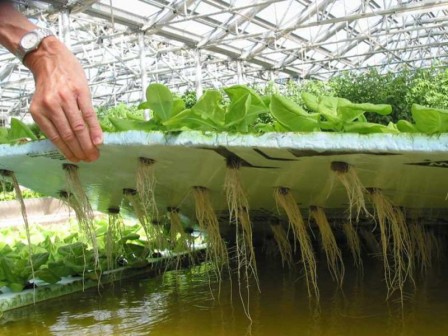

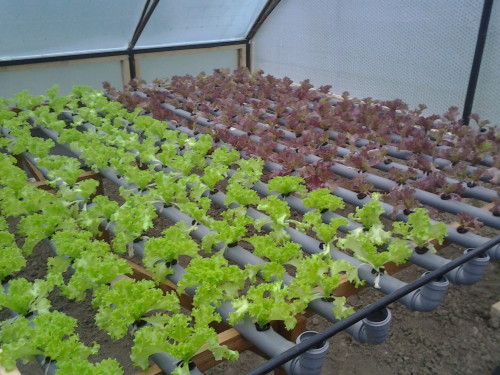
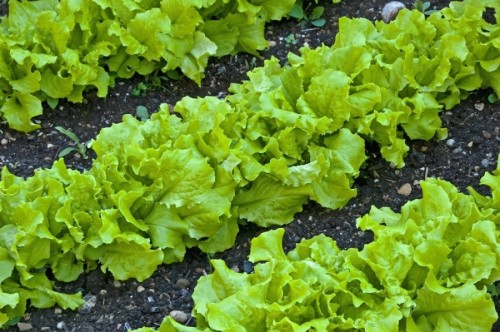
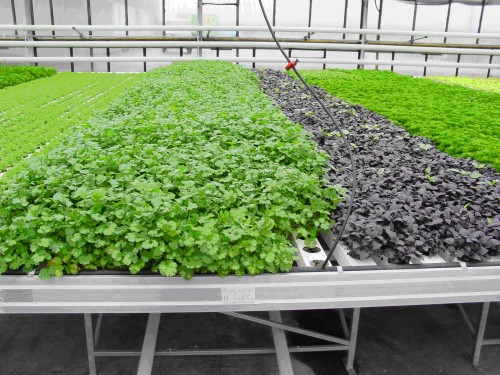
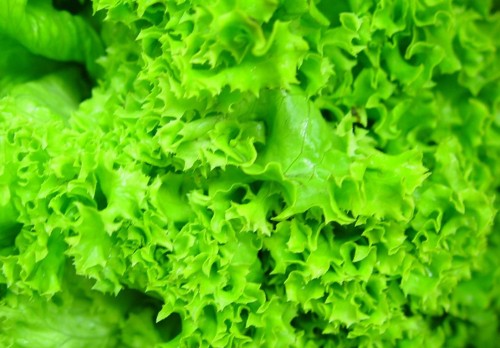












 Start a discussion ...
Start a discussion ...